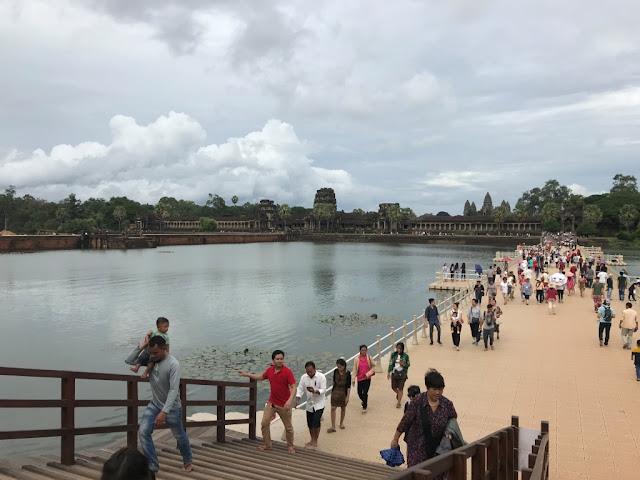Vietnam: What Makes it Unique
Fast rising on the list of exotic (and slowly, popular) tourist destinations is the small nation of Vietnam. If done right, this country in the easternmost corner of the Indochina peninsula has a lot to offer to the discerning traveller. It is both historically interesting and naturally rich, so take your pick and explore accordingly.
Vietnam can be clubbed with neighbouring countries, such as Laos or Thailand, and we chose to explore Vietnam and Cambodia together, in a span of 10 fun, luxurious days. In Vietnam we explored two cities - its largest and most populous city - Ho Chi Minh City, and the capital- Hanoi. We travelled mostly via their very comfortable cabs, popular among tourists in the region, and stayed in the city centre in order to be able to traverse the labyrinth of streets containing night markets, pub hubs and roadside restaurants at night.
Our first stop was Ho Chi Minh City, which we reached via a 6 hour bus journey from Cambodia’s capital, Phnom Penh. HCMC, Vietnam’s most populous city. The city’s many beautiful buildings and boulevards- a relic of its French colonial past, are a treat to the eyes. Many of the city’s tourist attractions are within walking distance of one another, so if you’re not close to the city centre, take a cab to it and walk around to see the rest of it. Some of the important sites in the city centre include the Reunification Palace, a very pretty building which hosts the Post Office, and the Opera House, and within walking distance- the grand vision of the Notre Dame Cathedral.
Ho Chi Min Post Office
The city is also home to many museums, the Ho Chi Minh City Museum, the Museum of Vietnamese History and so on. If you’re the type to go museum hopping to understand the feel of a place’s history and culture, you’ll find enough museums here to keep you occupied for a day or two.
When in HCMC, make sure to check out Ben Thanh Market (not too far off from the city centre). A good place to experience the local flavour- of street food, souvenirs and the shopping culture (involving lots and lots of haggling- think Sarojini Nagar).
Some local delicacies that you must try, if you’re a foodie (and preferably a non vegetarian) include mem Cuon or salad rolls (available literally everywhere), the various types and flavours of pho, canh and egg coffee.
Some local delicacies that you must try, if you’re a foodie (and preferably a non vegetarian) include mem Cuon or salad rolls (available literally everywhere), the various types and flavours of pho, canh and egg coffee.
Cu Chi Tunnels
 Different traps
Different trapsExploring one of the tunnels
On our second day, we drove to the Cu Chi District of HCMC, about a one hour drive from the main city, for a tour of the Cu Chi tunnels. The tunnels are now a well curated display of an immense network of underground tunnels ,preserved from the Vietnam war. An enthusiastic (and free) guide is part of the deal when you purchase tickets for a tour of the tunnels. The experience is really remarkable, with some on ground experiences, including a brief entry into the tunnels. Also served towards the end of the tour in an open tent are some traditional vietnamese tea and snacks, always an exciting proposition.
Turtle Tower, Hanoi
A quick flight to Vietnam’s capital, Hanoi, and we found ourselves once more, in maze like streets, full of roadside restaurants and loud celebrations and chantings of “Vietnam, Vietnam!” (They had just qualified for the semis in the Asian Games’ Football, and the Vietnamese, I was assured by a local, know how to celebrate a win.)
A fabulously exciting part of our trip was to begin the next day, an absolute must do- a two day cruise along the Halong Bay.

Halong Bay
We were, at first, surprised to find that our ship was not straight out of Dil Dhadakne Do, or even Humraaz, but quickly acclimated to the much quieter, more private and more personal experience of our cruise. If you’re a foodie, this cruise is worth every penny (and more) for the variety of sea food alone. An average of 10-15 mains per meal, and all of them local delicacies.
From shrimp, to oysters, to pork and squid, there was exotic seafood as far as the eye could see. There was moreover, never a boring moment- and not nearly enough time to simply laze about on the deck and gaze at the stunning view of the fold mountains all around.
And so I leave you, with gorgeous daydreams of a holiday simultaneously calming and exciting. What are you waiting for? Get packing!
--Meenakshi Kumar
Our esteemed client
--Meenakshi Kumar
Our esteemed client








































